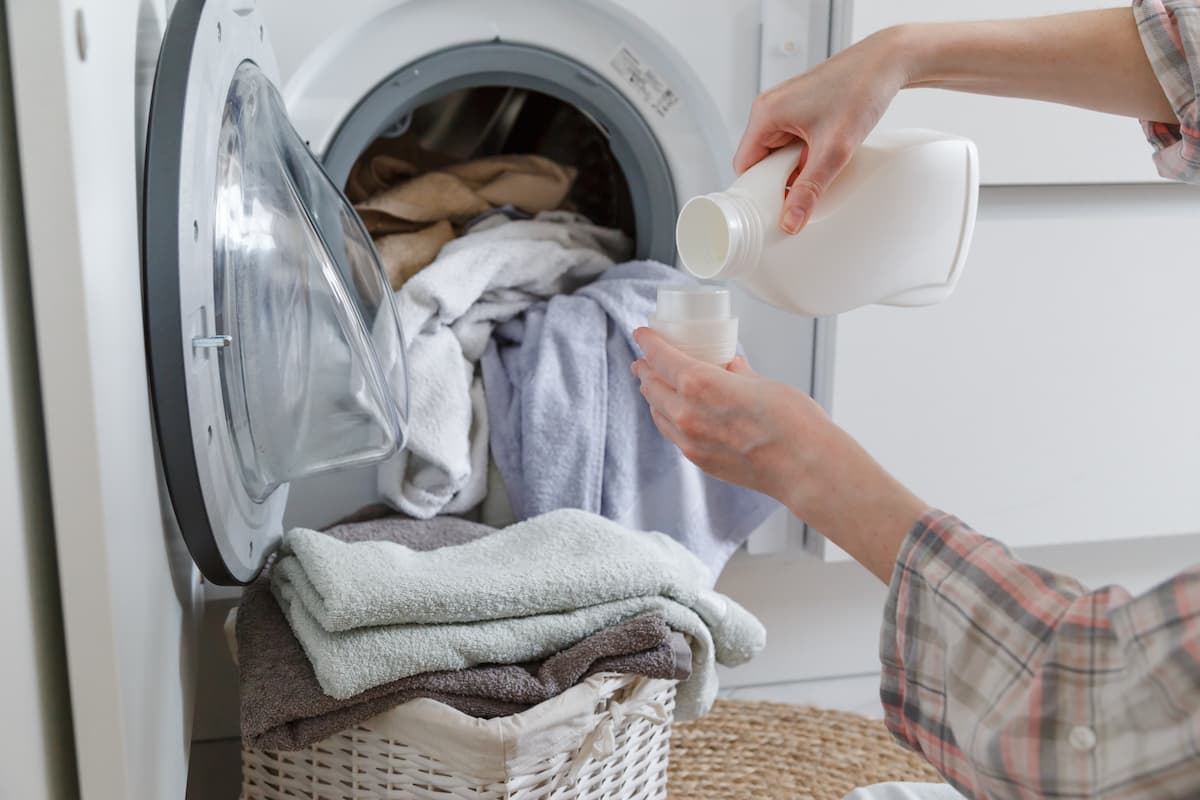MDF, or ‘medium-density fiberboard’ is a versatile building material that can be used for a wide range of purposes. Unfortunately, it is susceptible to mold problems if it is exposed to moisture in the air.
How to prevent mold on MDF
To prevent mold growing on MDF the most important thing is to keep the MDF in a dry environment. This will prevent moisture from getting onto the MDF, and reduce the chance of mold, as it cannot survive in dry conditions.
Additionally, you can use specially-formulated solutions for preventing and removing mold from MDF.
The likelihood of mold developing on MDF depends on the purpose it is being used for. If you are simply storing it for a future project, mold is unlikely providing it is kept in a dry container where moisture cannot enter.
If the MDF is likely to be exposed to moisture, then using a chemical designed to prevent mold is an effective measure to take. There’s a lot to discuss on this topic, so let’s get into the finer details below.

How to Prevent Mold on MDF
To ensure that you take the necessary measures to prevent mold from growing on MDF, it’s important to understand why this happens in the first place.
MDF is made from wood fibers that are bonded together using a resin adhesive. The wood fibers in MDF attract mold, making the material highly susceptible. The mold can feed off the fibers and thrive as a result.
This explains why in many cases when an item of furniture becomes moldy, it is the wooden components or surfaces that are covered in mold. Other materials don’t provide the mold with the food it needs to grow.
- When the MDF is exposed to oxygen, moisture, and warmth, it becomes the perfect breeding ground for mold. So, to prevent the MDF from becoming moldy, the most effective measure is to limit these variables.
If the MDF is kept in a container that is relatively cool with a consistent temperature, and where no water or moisture can get in, the chances of mold spreading will be greatly reduced.
This may be practical if the MDF is to be used in the future and you’re simply looking for the best way to store it without the risk of mold appearing.
Conversely, if you’re trying to prevent mold from appearing on MDF-based furniture or any other item, simply storing it responsibly isn’t an option.
The best course of action to prevent MDF from getting moldy is to keep it clean using anti-bacterial wipes. This will prevent the bacteria from growing and spreading if there are small amounts of mold already present on the MDF.
Next, you can use mold control spray to further prevent it from spreading. This will kill any of the bacteria that the antibacterial wipes did not remove from the MDF.
The most effective way to prevent mold is by sealing the MDF, which you can find more information on in the next section.
How Do You Seal MDF To Prevent Mold?
To prevent mold on MDF, it’s important to seal the wood. This prevents moisture from being absorbed into the MDF, which can also cause it to warp in addition to causing mold to spread.
You’ll first need to purchase a high-quality wood sealant that is compatible with MDF.
These sealants are also commonly known as “primers”. The sealant is designed to fill in the tiny holes between the particles and the resin adhesive in the MDF, preventing moisture from getting in.
Sealing MDF to prevent mold is a relatively straightforward process.
All you need is the sealant and a brush. The sealant should be applied evenly across the MDF, and you should take care not to miss any spots as this may leave them susceptible to mold.
If you don’t have a wood sealer, you can also use PVA glue which is an effective alternative. The glue should be applied sparingly so that when it dries it doesn’t leave any hard clumps on the MDF surface.
Take a look at this YouTube video that shows every possible way to seal and paint MDF.
Once you’ve applied the solution evenly across the MDF, you then need to wait for it to dry. Some sealants dry very quickly, while others may take longer. The process shouldn’t take more than a few hours at the most.
After the sealant has fully dried, it’s time to sand the MDF to remove any excess sealant that is on the outer edge of the wood. The aim is to simply fill in the gaps, rather than coat the entire outside in the sealant.
When sanding the MDF, be sure not to be too aggressive. This could lead to you removing the sealant that you applied earlier. Be gentle, and aim to only sand the surface layer of sealant without applying too much pressure.
It’s very important to choose the best possible sealant or primer for MDF material. Some primers are designed for hardwoods, while others are designed for more absorbent varieties like MDF.
You could also use a combination of primer and drywall compound, which works as effectively as the above method, but takes longer.
The compound must be rubbed onto the MDF evenly, removing any excess as required. Again, you’ll need to sand the MDF until it is smooth. Once the surface has fully dried you can then apply the primer evenly across the MDF. This will leave you with a mold-resistant surface.
Can Varnishing Prevent Mold on MDF?
Wood sealant is the most effective way to prevent mold from spreading on MDF. Varnish may seem like another logical solution, but unfortunately, it isn’t very effective for this purpose.
Varnish will prevent some moisture from being absorbed by the MDF, but it won’t seal it completely.
This means that moisture may still get into the gaps and mold could still form on the surface. Therefore, it shouldn’t be relied upon as the sole preventative measure.
If mold has affected the appearance of the MDF and after cleaning it with antibacterial wipes you still can’t get it all off, then varnishing is a good way to make the mold spots less visible
- The varnish will darken the MDF and reduce the visibility of the mold, but it won’t completely prevent it from spreading or coming back in the future as a wood sealant is able to do.
Cleaning and sealing the MDF is by far the most effective way to remove and prevent mold issues.
Can You Put Polyurethane Over MDF? (to protect from mold)
Polyurethane is a synthetic variety of wood varnish commonly used for finishing cabinets, floors, and other wooden items. Compared to most other varnishes, it is more effective at protecting the wood from mold.
Polyurethane can be put over MDF, just like any other sealant or varnish. To apply it, you should use a synthetic brush and ensure that you use even strokes to coat the MDF.
Polyurethane takes very little time to dry, so after around 30-40 minutes you can apply the second coat to the MDF. This will prevent mold from forming on the wood to an extent.
Before applying polyurethane, it’s a good idea to clean the MDF with antibacterial wipes or solutions. This will clean off any mold particles and bacteria so that there’s less chance of it spreading after the polyurethane varnish has been applied.
Other Tips for Preventing and Treating Mold on MDF
Prevention is the best form of attack against mold.
The more precautions you take, the less likely you are to get mold on MDF. As I stated earlier, keeping the wood in a dry, relatively cold area with good airflow is the best way to stop mold from spreading.
Mold is incapable of surviving in dry environments. Therefore, if the MDF is stored in a covered space where there is minimal moisture in the air, this will prevent mold from forming on the wood.
In the table below, you can find a summary of the methods used to prevent and treat mold on MDF.
| Method | Results | Suitability |
| Antibacterial wipes/solution | Removing mold & bacteria | Mild/moderate mold |
| Wood Sealant | Prevents mold from forming | Mild mold |
| Varnish/polyurethane | Prevents mold from forming and reduces the appearance | Mild/moderate mold |
| Chlorine bleach | Removing mold & bacteria | A large number of mold stains |
Related Questions
How do you prevent MDF from smelling?
If bacteria and germs get onto MDF, it can cause the wood to smell quite strongly. The way to eliminate this smell is by using vinegar on a warm cloth to wipe the surface, then using a detergent with anti-fungal properties to prevent the bacteria from returning.
How can I stop mold from coming back?
Mold only survives in certain conditions. The room needs to be warm, with moisture in the air. The best way to stop mold from coming back is by using a dehumidifier and ensuring that the windows are open regularly to allow air to flow through the space.
Can mold on wood make you sick or ill?
While most mold on wood will not harm you, there is a slight chance that it can harm your health. This is particularly true if you have allergies, as the mold can cause allergic reactions and irritation.





